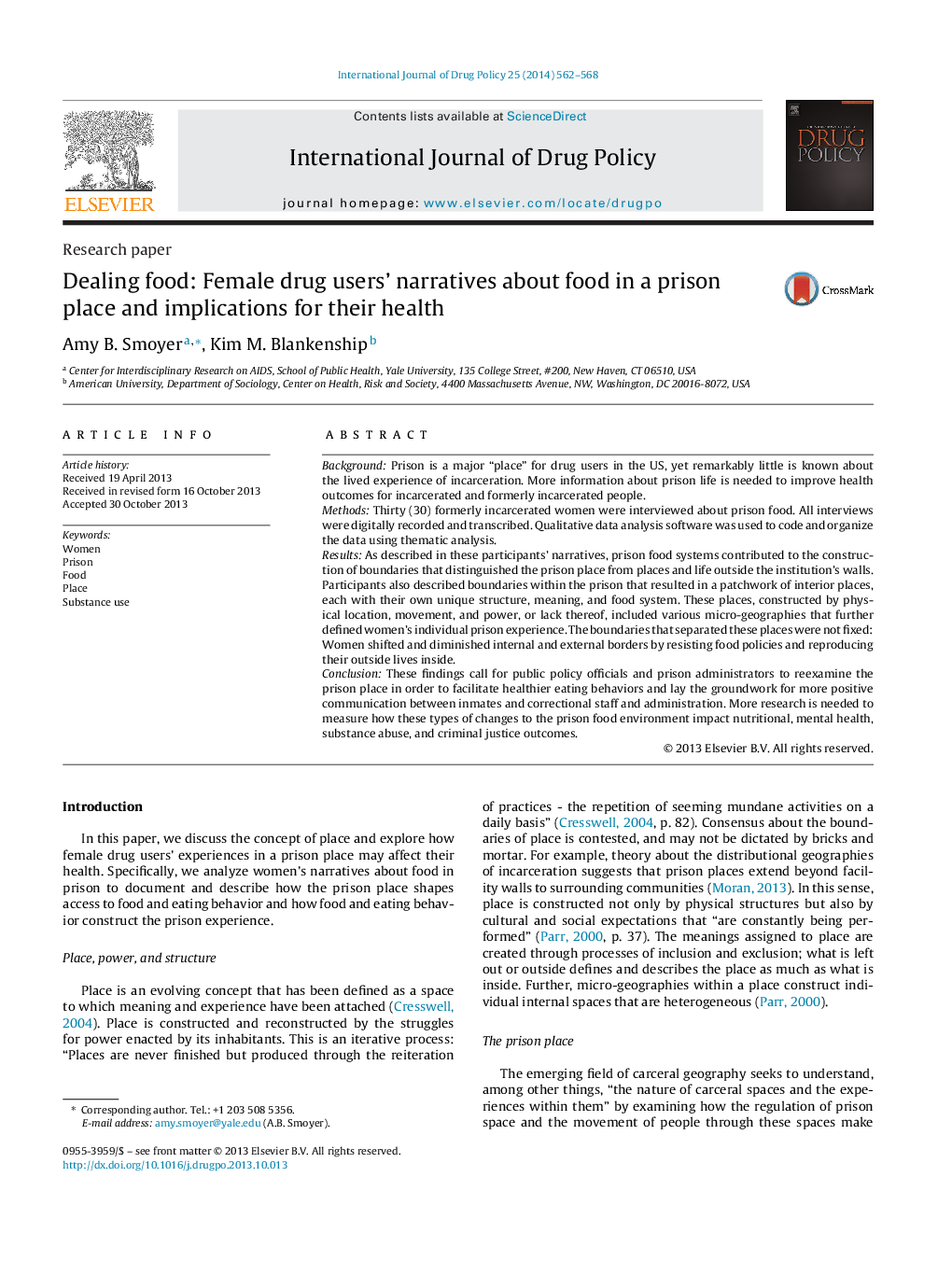| Article ID | Journal | Published Year | Pages | File Type |
|---|---|---|---|---|
| 1075129 | International Journal of Drug Policy | 2014 | 7 Pages |
BackgroundPrison is a major “place” for drug users in the US, yet remarkably little is known about the lived experience of incarceration. More information about prison life is needed to improve health outcomes for incarcerated and formerly incarcerated people.MethodsThirty (30) formerly incarcerated women were interviewed about prison food. All interviews were digitally recorded and transcribed. Qualitative data analysis software was used to code and organize the data using thematic analysis.ResultsAs described in these participants’ narratives, prison food systems contributed to the construction of boundaries that distinguished the prison place from places and life outside the institution's walls. Participants also described boundaries within the prison that resulted in a patchwork of interior places, each with their own unique structure, meaning, and food system. These places, constructed by physical location, movement, and power, or lack thereof, included various micro-geographies that further defined women's individual prison experience. The boundaries that separated these places were not fixed: Women shifted and diminished internal and external borders by resisting food policies and reproducing their outside lives inside.ConclusionThese findings call for public policy officials and prison administrators to reexamine the prison place in order to facilitate healthier eating behaviors and lay the groundwork for more positive communication between inmates and correctional staff and administration. More research is needed to measure how these types of changes to the prison food environment impact nutritional, mental health, substance abuse, and criminal justice outcomes.
